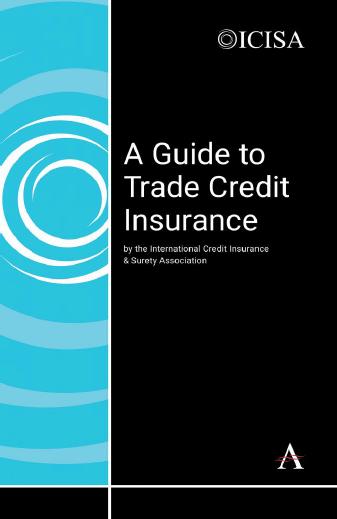
9 minute read
Will Turkey’s Crisis Trigger Contagion to Asian Emerging Markets?
Book Title Emerging Markets Megatrends Author Rajiv Biswas Copyright 2018 Publisher Palgrave Macmillan eBook ISBN 9783319781235 Hardcover ISBN 9783319781228 www.amazon.com/EmergingMarketsMegatrendsRajivBiswas/dp/3319781227
Are Emerging APAC Economies Vulnerable to Contagion?
Advertisement
The direct transmission links between Turkey and APAC through trade flows are significant for a number of APAC economies. Six APAC countries are among Turkey’s top twenty sources of imports, led by China, which is Turkey’s largest source of imports. The Turkish economic crisis and slumping lira will impact on bilateral trade, orders for Malaysian products in 201819. In contrast, the competitiveness of Turkish imports to APAC nations
will be boosted by the slumping lira. However, the more significant concern for APAC nations would be if the Turkish economic crisis results in contagion to emerging markets currencies and equities, which could potentially trigger significant capital outflows from
has already resulted in the depreciation of many emerging markets currencies against the USD since the begin
ning of 2018, with further US Fed tightening expected during 2019. For many APAC countries, these risks to currencies and equity markets are mitigated by the significant improvements in macroeconomic resilience since the as the cost of imported goods will rise significantly in Are Emerging APAC Economies Vulnerable to Contagion?
Asian crisis. During the past two decades many Asian economies that were at the center of the Asian financial Turkish lira terms due to the sharp currency depreciaThe direct transmission links between Turkey and APAC through trade flows crisis, including South Korea, Thailand, Malaysia and are significant for a number of APAC economies. tion this year. For example, Malaysian bilateral trade with Indonesia, have made tremendous progress in addressSix APAC countries are among Turkey’s top twenty sources of imports, led by Turkey grew rapidly in 2017, reaching a level of Ringgit ing the macroeconomic and financial vulnerabilities that China, which is Turkey’s largest source of imports. The Turkish economic crisis and slumping lira will impact on bilateral trade 12.1 billion for the calendar year, with Malaysian exports contributed to the Asian financial crisis. Among the ma, as the cost of imported goods will rise significantly in Turkish lira terms due to to Turkey having reached Ringgit 10.5 billion. However, jor achievements, there have been significant progress the sharp currency depreciation this year. For example, Malaysian bilateral trade with Turkey grew rapidly in 2017, reaching a level of Ringgit 12.1 billion for the calendar year, with Malaysian exports to Turkey the steep depreciation of the lira is likely to hurt Turkish in the sophistication of macroeconomic management, having reached Ringgit 10.5 billion. However, the steep depreciation of the lira is likely to hurt Turkish orders for Malaysian products in 2018-19. In contrast, as well as farreaching banking sector reforms that the competitiveness of Turkish imports to APAC nations will be boosted by the slumping lira. have resulted in stronger prudential regulation of banks, much improved capital adequacy ratios in the banking
25 Turkey: Key APAC Trade Partners Exports to Turkey in 2017, USD billion
system, better risk management systems and adoption of macroprudential measures to manage risks related to real estate lending.
20
15
10
5
0
China South Korea India Japan Malaysia Vietnam
Many Asian economies have also built up their foreignexchange reserves to improve their resilience against volatile international capital flows as well as strengthening their financial resilience by adopting macroprudential measures when required. The Chiang Mai Initiative, agreed in 2000 in the aftermath of the Asian financial crisis, has also created a regional mechanism for cooperation among the ASEAN countries plus China, Japan and South Korea for financial crisis prevention
Indonesian rupiah Indian rupee The ICISA INSIDER | October 2018 | ARTICLE Russian ruble South African rand Brazilian real Turkish lira ArgenPne peso Article by Rajiv Biswas, Asia-Pacific Chief Economist, IHS Markit
-‐11 -‐13,5 -‐13,5 -‐16,7 -‐13,8 -‐38 -‐50,5
-‐60 -‐50
Emerging Markets Currencies vs USD year-‐to-‐date, 8 October 2018
-‐40 -‐30 -‐20 -‐10 ArgenHne peso Turkish lira Brazilian real South African rand Russian ruble Indian rupee Indonesian rupiah South Korean won Chinese yuan Singapore dollar Malaysian ringgit Thai baht
0
and resolution, initially built around a network of bilateral currency swaps.
Indonesia and the Philippines have also substantially improved their fiscal positions with very substantial reductions in government debt as a share of gross domestic product (GDP). Malaysia, Indonesia, Thailand and the Philippines have also taken steps to deepen their equity and bond markets, improving the diversity and liquidity of their capital markets.
Macroeconomic Vulnerabilities among APAC Nations
Despite the significant progress by many APAC emerging markets in improving their macroeconomic resilience, some Asian developing countries still remain vulnerable to contagion risks due to macroeconomic imbalances or political risk factors. Global investors have continued to differentiate among the various APAC economies, based on their differing vulnerabilities to political and economic risks.
In South Asia, several nations are already facing external debt problems. Sri Lanka is already a recipient of an IMF Extended Fund Facility, and faces further challenges due to high foreign debt repayments required over the medium term. The newly elected Pakistani government led by incoming prime minister Imran Khan also faces an imminent external debt crisis reflecting heavy new foreign borrowing of around USD 29 billion in the past three years, This is mainly in relation to Belt & Road projects, which have contributed to pushing total external debt to an estimated USD 92 billion, creating a mounting debt burden that may eventually require another IMF bailout.
Contagion in Emerging Markets Currencies
“Cecily, you will read your Political Economy in my absence. The chapter on the Fall of the Rupee you may omit. It is somewhat too sensational. Even these metallic problems have their melodramatic side.”
Miss Prism to Cecily, Act 2, “The Importance of Being Earnest” by Oscar Wilde
Some larger Asian emerging market economies may also be vulnerable to contagion resulting in currency depreciation and portfolio capital flight. India is one of the more vulnerable APAC emerging markets to external account shocks, as rising world oil prices have pushed up India’s oil import bill, resulting in a widening current account deficit. The Indian rupee (INR) and balance of payments position is also vulnerable to foreign portfolio capital outflows, if investor sentiment about the political or economic outlook turns bearish. The INR has already hit a series of record lows against the USD through August, September and October, depreciating by around 14% in 2018 to date.
Indonesia also continues to be regarded by global investors as one of the more vulnerable large APAC emerging markets to global contagion. An important source of vulnerability for Indonesia relates to potential hot money outflows because of the high share of foreign ownership in the local equities and bond markets. Indonesia recorded net portfolio outflows in the first quarter of 2018, the first quarter of outflows since the third quarter of 2015. Foreign ownership of rupiahdenominated government bonds remains at about 40%. In addition, non
residents hold 61% of total general government debt, amounting to about 16–19% of GDP. Corporatesector exposure is also significant, with 45% of corporate debt in Indonesia being held by foreign investors.
Indonesia’s central bank, Bank Indonesia, raised policy rates by a cumulative 150 basis points between May and September, in response to the substantial depreciation of the rupiah that the bank was unable to stabilize by intervention in foreignexchange markets. After depleting more than USD12 billion of foreignexchange reserves during the first six months of 2018 in attempts to stabilize the rupiah, the Indonesian central bank has resorted to aggressive and “preemptive” tightening of monetary policy to help stabilize the currency. The rupiah has depreciated by around 11% against the USD during the first nine months of 2018.

In contrast, APAC economies with sound macroeconomic settings, strong external account positions and substantial FX reserves such as South Korea, Taiwan and Thailand have been relatively resilient, despite recent turbulence in emerging markets currencies that have been triggered by factors such as US Fed monetary policy tightening and fears of emerging markets contagion risks.
Risks to the APAC Outlook
Despite severe economic crises in a number of large emerging markets, including Argentina and Turkey, many APAC emerging markets have so far shown resilience to emerging markets contagion due to their strong macroeconomic fundamentals. Global investors have continued to differentiate between Asian economies based on vulnerabilities to macroeconomic, external account and political risks.
However, with the USChina trade war escalating in recent weeks, a slowdown in APAC regional trade growth and negative impact effects on the East Asian manufacturing supply chain remain an important downside risk to Asian emerging markets APAC countries are among the most vulnerable in the world to an escalating USChina trade war. South Korea, Taiwan, Singapore, Malaysia, Vietnam, Thailand and the Philippines are among the most vulnerable economies to the shock waves of a such a trade war.
Furthermore, the APAC region has become increasingly vulnerable to the downside risk of a China hard landing scenario due to the rising importance of China as the largest economy in the region. While a China hard landing still remains a low probability scenario, if it did in fact occur, it would unleash a tsunami of contagion across the APAC region through negative shocks to regional trade and investment flows and turmoil in regional financial markets.

Rajiv Biswas is the Asia-Pacific Chief Economist for IHS Markit.
Afianzadora is launching “BuildAnalytics”
Afianzadora Latinoamericana has introduced “BuildAnalytics”, a new tool for the efficient administration of the contract guarantees business.
Based on the BI (Business Intelligence) Platform, this innovating software allows a “just in time” followup of guaranteed contract risks run under such method. It generates a virtuous circle between the parties, where being next to the risk means early alerts before any inconvenience, thus making it possible to generate preventive/corrective actions as soon as the fault arises. Likewise, its application results in an improvement in reinvoicing, and in an economic benefit for the taker since invoices adjust to the Last July, 2018, Aserta Financial Group announced as a major achievement that Aseguradora Aserta and Aseguradora Insurgentes received the final authorization to operate as the first Caución Insurance Companies in Mexico. This authorization has enhanced both Companies’ business lines, adding Caución and Credit Insurance to their Surety Bonds’ operations. At the same time, it has changed their business names; Afianzadora Aserta, dated back to 1954, is now Aseguradora Aserta and Afianzadora effective advancement of the guaranteed project. BuildAnalytics, a system that lets us all win.
For further information see www.afianzadora.com.ar or follow up in the social

Catalogue of Credit Insurance Terminology
The new English edition of the catalogue is available. It can be downloaded from the ICISA website (www.icisa.org). To order a hard copy, please send an email to secretariat@icisa.org
Aseguradora Aserta and Aseguradora Insurgentes operate as the first Caución Insurance Companies in México
Aserta Financial Group announces the start of Caución and Credit Insurance operations in both Caucion Insurance Companies, driving Aserta´s internationalization strategy plan.
networks. Insurgentes, founded in 1958, is now Aseguradora Insurgentes.
In Europe, this process boosts Aserta España, according with its internationalization strategy plan.
Besides their leadership in Mexico and start up in Spain, Aserta has strengthened its growing network of international “fronting” partnerships in LATAM. CATALOGUE OF CREDIT INSURANCE TERMINOLOGY
English edition






